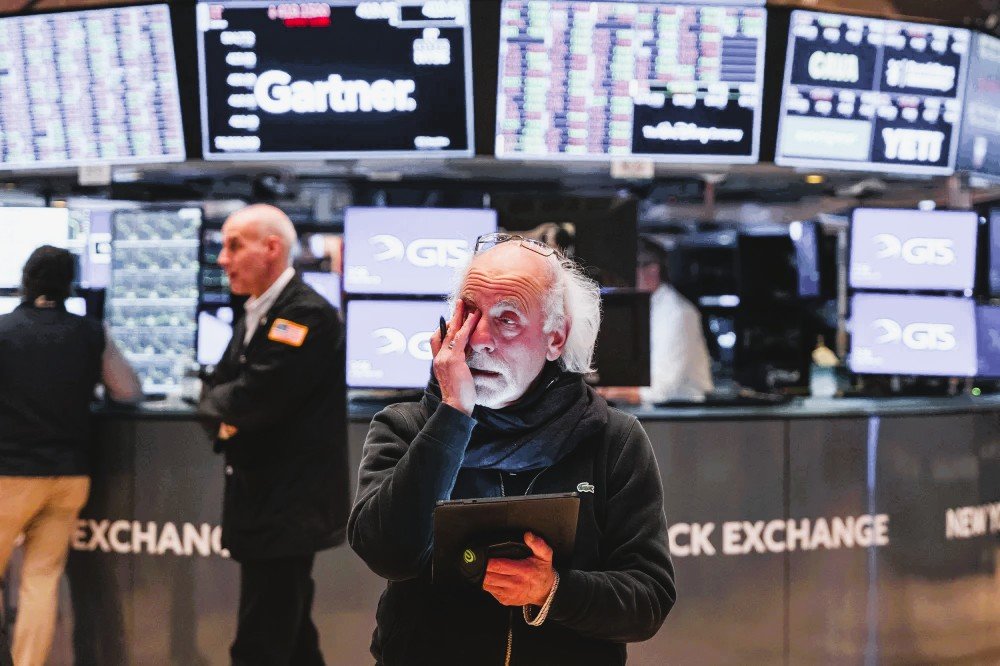Markets plunge as investors continue to sell holdings ahead of Trump’s tariff announcement Markets fell sharply in early trading on Monday morning, as investors continued to sell their stocks ahead of President Donald Trump’s “Independence Day” tariff announcement.
The broad-based S&P 500 index fell 1.3%, the tech-heavy Nasdaq lost 2.3%, and the Dow Jones Industrial Average lost 0.7%.
Reports over the weekend suggested that while Trump is still deciding what form global trade tariffs will take, he is leaning toward a tougher punitive regime targeting most U.S. trading partners. Trump himself confirmed in a statement on Air Force One on Sunday evening that the tariffs “will start with all countries.”
Last Friday, markets had their second-worst day of the year, as investors weighed down by worrying inflation and consumer confidence data, as well as concerns about slowing investment in artificial intelligence (AI).
With those losses, the S&P 500 is down about 5% for the year and 6% since Trump’s November election. Today, it’s at its lowest level since September. The tech-heavy Nasdaq is down even more—down 10% for the year and 9% since Trump’s election win.
Now, stocks are likely to have their worst quarter in three years.
Unlike his first term, the president has shown little interest in paying attention to investor concerns and market reactions. Trump has shrugged off the fierce opposition to his tariff plan in business circles, even though the fear of higher tariffs alone has businesses and consumers expecting a recession.
Later on Sunday, he was asked about the growing threat of stagflation (the lack of economic growth accompanied by inflation), which many analysts say is starting to emerge. He replied, “I haven’t heard that term in years. I don’t know anything about it… This country will grow. We’re moving towards a prosperous economy.”
According to a CNBC survey of 14 economists, GDP (the value of all goods and services produced in the United States) is expected to grow by just 0.3% in the first quarter, compared with 2.4% in the first quarter of 2024.
Goldman Sachs economists cut their GDP forecast to 0.2% on Sunday, saying they expect tariffs to be “more aggressive than before.” They now estimate full-year GDP will grow by just 1.5% (down from 2%), and the chance of a recession has risen from 20% to 35%.
They said the change reflects “the recent sharp decline in household and business confidence, and statements from White House officials that they are willing to tolerate short-term economic weakness to implement their policies.”
Goldman also cut its earnings estimates for S&P 500 companies, citing “higher-than-our-forecast tariffs, weaker economic growth, and higher inflation.” The bank sees the index at around 5,700 by year-end, up just 120 points from Monday’s trading.
If Trump’s tariffs remain in place, the U.S. tariff rate will be “the highest since World War II,” according to estimates from Deutsche Bank.
The Trump administration is still standing its ground. Over the weekend, Vice President J.D. Vance echoed Trump’s claim that the United States has become the world’s “piggy bank,” while falsely claiming that middle-class wages have fallen. “The days of closed factories, and the days of middle-class jobs not being available in this country, are over,” he said.







